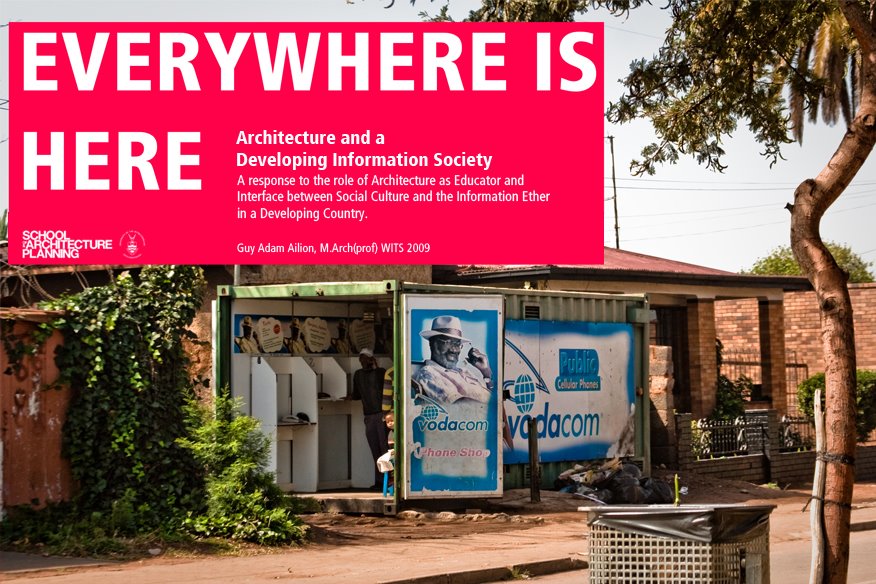In response to Information Age in a Developing Context, I have set my thesis Question as: How Can the Architecture of the Information Age Interface and Educate a particular Culture of Use?
Someone can tell you, “Lavender smells like nausea and modern cosmetics”. An Online Encyclopedia can tell you it’s a mix of soothing mint, crisp basil, and a relaxing vanilla aroma, but do you then really know what lavender smells like or have you just learnt it? In the 1980’s children would swop small pieces of paper called ‘Scratch ‘n Sniff’, that allowed them to physically scratch a piece of paper thereby removing a micro-fragrance coating that released a faint odor. This basic product incorporated a physical contact that provided kids with mystery, engagement and education by interaction. The invisible virtual world of information and the World Wide Web is like a plethora of people telling you what lavender smells like.
At present we observe a world that is 100 years into the Information Age (Castells, M. 2004). Characterised by new Information and communication technologies the Information Environment is still in its infancy and is “ferociously Darwinian” in its development ( Mitchell, W. J. 1997). Progressive Information Technologies are constantly evolving and mutating, and if communities do not evolve with it they face being left behind ( Wilson, E. J. 2004). Architecture and urbanism must see this evolution as an integrated experience into the daily lives of the public instilling a culture of use and awareness ( Mitchell, W. J. 1997:4). It is important to see how the current forms of Information transference, storage and access exist in virtual realm, an invisible world that both surrounds us and eludes us. A problem occurs where this lack of physical presence manifests an invisible barrier between form and function, or rather between possibility and use.
Architecture has always imbued a relationship with the sciences and the human senses through a ‘sensorial dimension’ ( Picon, A. 2003:295). In other words, “science and technology only meet when they both contribute to the cultural construction of perception.” ( Picon, A. 2003:295). Architecture and its relationship to public space are concerned with a material-form existing in the ‘real’ (built environment). We can see it, touch it and engage with it as a physical experience. In the Information Age, Architectural form must offer its components to interface between the physical and virtual, linking information technology to new spatial programs, surfaces, experiences, and public functions ( Witte, R. 2002:72). The Civic Library as an archetype for public resource and information access plays a significant role in educating and nurturing the Information Society. The role of the public resource centre in the Information Age goes beyond providing the surface of a screen - it must update, physically interact and stimulate a culture of knowledge and innovation that is both relevant and progressive thinking. We must become a scratch and sniff information society.
Subscribe to:
Post Comments (Atom)

hi gi! very interesting, scratch & sniff
ReplyDeletexxx